Diary of a Chambermaid: An interview with Lea Seydoux and Benoit Jacquot
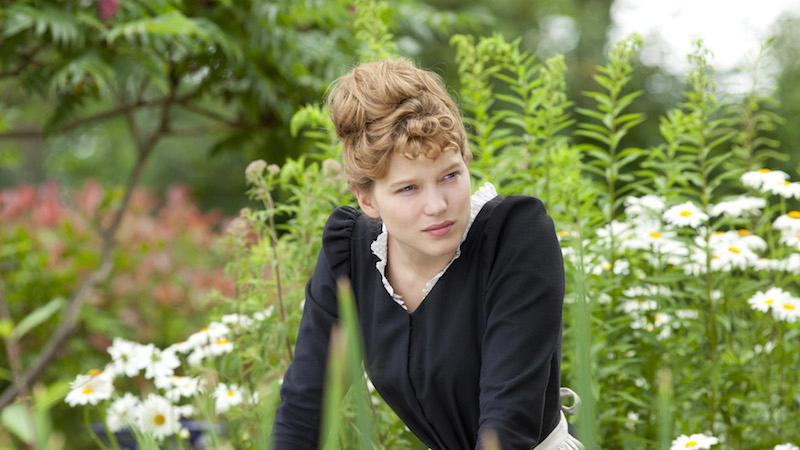
Diary of a Chambermaid premiered at the Berlin Film Festival 2015 (review), here’s an interview with star Lea Seydoux and director Benoit Jacquot.
Lea Seydoux
After Farewell, My Queen, Diary of a Chambermaid marks your reunion with Benoit Jacquot.
It’s a great pleasure to enjoy continuity with a director. You keep on renewing a kind of complicity, a way of working that, in the case of Benoit, needs no words. But you can still be amazed or surprised. Since “Farewell,My Queen”, I’ve worked with other directors and had other experiences. I’ve grown.
What seduced you in this film?
Its originality, its modernity, its particular rhythm– a counter-rhythm, in fact, that could be sensed even when it was still being written. I like movies that are off the beaten track.
Talk to us about Célestine.
She’s a pragmatist, who’s always trying to survive. She won’t let herself be defeated. If she has to accept a job in the provinces, so be it. Célestine is not into playing the victim, she has a certain pride and even a certain snobbishness. And a certain culture too. She sees through appearances, she detects the pettiness and foibles of the people around her, but she’s no better than the rest. This is not about a nice girl and evil people. Her employers exploit her, but she is at times able to exploit them back. Her condition has toughened her. She is the mirror of the ambient brutality and has no other choice but to apply it herself: she doesn’t want any bosses anymore, and leaving with Joseph is the only other possibility available to her.
How would you define her attraction to him?
He has a morbid kind of magnetic pull over her. Célestine desires Joseph, but does not hide the truth from herself. She does not share his anti-Semitism – she is much more intelligent and evolved than he is – and realizes that he might be a criminal. But she accepts him. To free herself from the yoke of the Lanlaires, she is willing to accept another kind of violence. Everything she does has to do with the notion of survival.
It’s a crushing role. How did you prepare for it?
I wanted Célestine to have bearing. I always try to find a posture specific to the character I’m playing. Once I’ve worked that out, I feel I possess all the keys. In her tightly corseted dresses, Célestine holds herself up very straight.I also used the doubts I was feeling at the time. It was a period during which I had lost confidence in my abilities as an actress. I worked a lot. You might say that with Benoit I rediscovered the pleasure of acting.
How do you use those doubts?
As a weakness that you can transmute into a strength. It is always you that you are talking about when you play a role. You play with your contradictions. It’s pretty fantastic for an actor or actress to be able to invent someone, to give him or her colours, just as a painter creates a painting, using your own personal emotions and obsessions. Your discomfort can prove to be valuable.
You give the character a very physical dimension.
When Célestine washes a floor, she washes it. When she eats, she eats. He body is always expressing something. That becomes even more important, because she is constantly holding something back. She permanently contains the feelings of injustice that gnaw at her, but on the inside she is seething. That strife had to be conveyed in a quasi-physiological way.
Célestine expresses herself in a language that we no longer use, she wears clothes from another century, but you manage to make her seem very contemporary.
I wanted her to be alive, to be natural. Her words and clothes may not be those of today. But she speaks and moves just like we do. That is the whole challenge of a film that takes place in another era: refusing to remain limited to illustration… respecting codes while breathing new life, real modernity into them. Céléstine’s combativeness helped me: she reflects the period we live in today.
How does one work with Benoit Jacquot?
Little rehearsal. Benoit likes for things to arise spontaneously on set. That was an advantage in my scenes with Vincent Lindon. He and I know each other well, but we had never worked together before, and I was nervous about filming a love story with him. You give so much of your intimacy, it’s embarrassing. The fact that we did not rehearse much created an effect of surprise. I sometimes felt thrown off balance, and that was good for Célestine. Fear is definitely something that I like to use in my acting.
You seem to have been closely associated with the film.
Benoit Jacquot says he entrusted you with it… including the edit.Benoit Jacquot listens to his actors. He loves them – few filmmakers feel such love for their actors. I did occasionally tell him my point of view – regarding some scenes that I thought were too talky, or some sequences during the edit, in which I thought my character was lacking in intensity. It is important for an actor to have his own subjectivity, to feel that the director is listening to him. But my interventions were minimal. Diary of a Chambermaid is truly his film, a unique film, a film off the beaten track.
Benoit Jacquot
Why did you want to film an adaptation of Diary of a Chambermaid?
I wrote and shot this film out of a kind of need: I detected a direct echo in it of our current socio-political climate. In a roundabout way, Mirbeau’s novel, which takes place at the beginning of the twentieth century, gave me the opportunity to deal with issues that our society no longer does, other than in a roundabout way: salaried slavery, anti-Semitism, sexual discrimination.It also gave me the opportunity to follow once again a female character from the first to last shot, as I have often already done.
One cannot help but think of the films already based on it, by Jean Renoir in 1946 and Luis Buñuel in 1964.
The one thing that they have in common is the fact they are both based on the Mirbeau novel. Other than that, they are so different that they are hard to compare. And so it wasn’t mad to propose a third. That is at least what I told myself.
Your adaptation is very faithful to the novel.
But I did make some choices. I took a few scenes to juxtapose in a certain order, to make up the matter of this“Diary”: a chronicle interspersed with reminiscences.
The film starts with a job interview. The employment office and Célestine’s conversation with the office manager have a crucial role to play in the story.
That interview and those that immediately follow struck me as being our framework. What is said there refers to situations that involve all of us, reminding us that salaried slavery, as they used to call it, still exists and that its brutality has not changed one bit. Dramaturgically, it was important to make that the guiding thread of the narrative. It was also a way of denouncing the current discourse that tends to camouflage and downplay the increasing violence of the world of work.
“There are nothing but bad employers”, Célestine says to Dominique Reymond, the recruiter. “No, there are nothing but bad servants”, she answers. In one scene, everything, or almost, about the heroine’s condition has been said.
Yes, the situation traps her in as constant a cynicism as possible.
Célestine is intelligent. She is different from the rest, she’s a fighter, she can be insolent, she can refuse jobs that she is offered, and still, if she does escape her condition, it is only to succumb to a darker fate.
She goes from bad to worse. Once she decides she no longer wants a master, her only alternative is to work in a bordello, or to follow Joseph, a guy who represents the worst, but who is her only possible way out.
She is immediately attracted by the groom at the Lanlaires’, the provincial bourgeois with whom she is placed,even though at their first meeting she evinces nothing but a certain repugnance for him.
It’s like a meteorological phenomenon: they feel an immediate erotic attraction/repulsion. Keeping to the chronicle aspect of the film, I needed another thread to guide it dramatically. Played by Vincent Lindon, the character of Joseph worked as an inducer in a way for me. He is a blend of magnetism and calculation, a character whose ignominious nature is appealing.
A kind of monster.
Yes, and as monsters often do, he works a violent charm over those who dare approach him.
As early as the meal scene in the pantry, Célestine and Joseph exchange glances that contrast with her attitudeto other men.
In Célestine’s world, men, with the exception of Joseph and young Georges, are nothing but instruments of her calculations or, possibly, the chance to have a sexual need satisfied on the spot. A guy passes by and looks at her, and she immediately lets herself be pulled into a room and manhandled. Célestine knows only male brutality, even when she finally makes love with Joseph. And there are the dogs, who are very important, because they are the heralds of danger- the dogs who are constantly on Joseph’s heels, who obey only him and those he orders them to obey, with whom he has an almost animal bond that he coldly destroys in the end.
Joseph is calculating, a thief, perhaps even a racist, and he is violently anti-Semitic.
I didn’t wait to read Mirbeau to feel sure – thanks, most notably, to the works of Zeev Sternhell – that modern anti-Semitism, the anti-Semitism of the twentieth century, is largely a French invention. His novel gave me a chance to go back to the sources of that anti-Semitism. The French nationalist discourse considers it a nepiphenomenon and gladly attributes it to our German neighbours. But it does go back to at least the days of Georges Boulanger, Edouard Drumont and Maurice Barrès, to crystallize at the time of the Dreyfus affair,which is pretty much the period in which our film takes place.Historians know : what happened then has determined what we are experiencing now – segregation by class,race, sex.
By surrendering to Joseph, Célestine surrenders in a way to the sirens of extremism.
Even if we go out of our way to point out that Célestine is not by nature open to anti-Semitic arguments – “If I put my mind to it, she says, I don’t see why I should be against the Jews. I’ve worked for them (…) they’re no worse than the rest” – she yields to Joseph for the same reasons that today drive so many people into the arms of the extreme right and fundamentalism. Despair and poverty can easily lead to finding the most apocalyptic of discourses appealing. Célestine is attracted by the radical energy that Joseph exudes and which fits in with the radicalism of the times, a populism marked by anti-Semitism. We tend to forget that the progressive leaders of the day – Auguste Blanqui, Louise Michel, etc.-, were eventually anti-Semites in the name of anti-capitalism.
Célestine works hard at the Lanlaire’s. She is constantly doing unpleasant chores. You spend a lot of time on such scenes.
I wanted them to look beautiful – besides, that desire marks my entire direction of the film. Such beauty makes the unpleasantness of the situation stand out all the more. I never wanted the style of our filming to exaggerate the misery. I am very attached to the scene in which her employer sends Célestine to look for thread, then upstairs to find a needle, and then up again for scissors. It is an exercise in obedience. Madame Lanlaire takes rather perverse pleasure in enslaving Célestine. She watches for her reactions.
Célestine obeys, grumbling. She mumbles and seethes on the inside, but never removes her armour, other than on a few very rare occasions.
Those moments when she is overcome with emotion – when she learns that her mother has died, or when it is suggested that she takes a job in a bordello – are very important. They betray the bundle of emotions that she holds inside, they make her more accessible to us, they make her seem vulnerable before she becomes insolent.
We sense that she is capable of great gentleness. “All you need to do is speak to me gently, not treat me like a parrot or a dog, for me to feel immediately touched”, she says when taking on a job with old Madame Mendelssohn and her grandson. But even at happy times, she is unable to forget her servant status and, for example,call the young man anything but Monsieur Georges. “I could never !”, she exclaims.
Like slaves, she interiorises her servitude. That is what is called “voluntary servitude”, and it seems to me that we never worry about that enough.
Ultimately, Célestine never divests herself of that feeling. She thinks that she will escape her condition by following Joseph, but all that she does in fact, is go from one master to the next. “He owns me”, she says as she leaves the Lanlaires’ home.
Yes, she suffers from the very fugitive illusion that by choosing him, she will be able to embark on something else, but she is obviously wrong. She continues on her way from bad to worse.
Most scenes in the film function as little fables…
That is how the film is built. Some, which may appear to be insignificant, are very meaningful. I am thinking of the sequence in which Madame Lanlaire sends Célestine to buy meat for the dogs. The meat is sliced, beautiful, red meat; she gives it to the dogs and says to Joseph in passing: “Rich people’s dogs are not poor”. It’s brief, pithy French, and it goes straight to the point.
Talk to us about Captain Mauger, the Lanlaires’ neighbour, who eats flowers and officially shares his bed with his maid Rose.
He, Rose, the women of the village, and even Lanlaire, are part of a gallery of absurd, eccentric, and at times darkly comic characters, who contribute to the mocking, sarcastic tone of the film. I took great pleasure in drawing their portraits… which is rather unusual for me, since I most often rely on understatement.
The actors who play them are mostly unknown.
The difficulty with this kind of role – and that goes for the Lanlaire couple as well – is that you’re constantly up against limits: you must not hold back, but you must also never step outside the boundary beyond which nothing is credible anymore. Actors trained for the theatre master those techniques well. For Lanlaire, I felt very strongly about Hervé Pierre, the extraordinary actor from the Comédie Française who had already played a role in two of my earlier films. His wife, Clotilde Mollet, is also a brilliant actress, and I liked the idea of using a real life couple for the couple in the film. I had noticed Patrick d’Assumçao in “Stranger by the Lake”. He also comes from the stage, as does Mélodie Valemberg, who plays Marianne.
You again work with Léa Seydoux, with whom you filmed “Farewell, my Queen”.
I actually entrusted her with the film.
And Vincent Lindon, with whom you had already worked three times before.
We hadn’t worked together for a long time – but by the way, we have another movie in the works. Vincent is gifted with an immediacy, a paradoxically refined brutishness, which fits perfectly well with Joseph’s appeal for Célestine.
Talk to us about Hélène Zimmer with whom you co-wrote the screenplay.
She is the one who made me discover the Mirbeau novel. I knew the films, but not the book they were based on. Hélène, who gave me the screenplay of her first feature film, “Being 14”, to read, had herself just discovered Diary of a Chambermaid And she told me in no uncertain terms that I should also make it into a film. Her tone impressed me enough to start reading it to see why she encouraged me so much. I suggested that we collaborate on its writing.
As always, when you shoot historical films, Diary of a Chambermaid is astonishingly modern.
That is almost a principle for me: I try to naturalise a language that is no longer ours, to make it sound contemporary, to respect turns of phrase from the time of the film, while giving the impression that they are stillcurrent today. I work the same way on costumes. They are authentic to the period represented, but are wornand manipulated like contemporary clothes.
Your direction is particularly beautiful and gives the film its singularity.
That singularity, if it exists, is perhaps related to the fact that the story of the film takes place at the beginning of a period that is still struggling to end today. For me, as for many of us, it is the twentieth century that reached the nadir of horror. In a way, it reached the heart of darkness. Cinematographically – and I am not the only one to think it, nor the only one to try it- we need to relate that. I wanted to do that by countering – in my filming and in the characters’ acting – the horror that the film evokes with a certain charm and elegance.It was important that the lighting, camera work, layout of the frames all obey a rigorous aesthetic, in order to reveal even more brutally the pernicious reality that still enwraps us today.
The editorial unit
Read our review of Diary of a Chambermaid here.

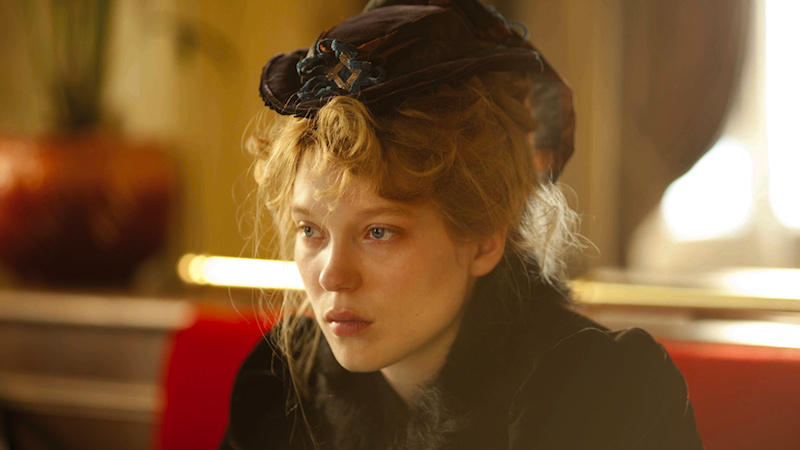


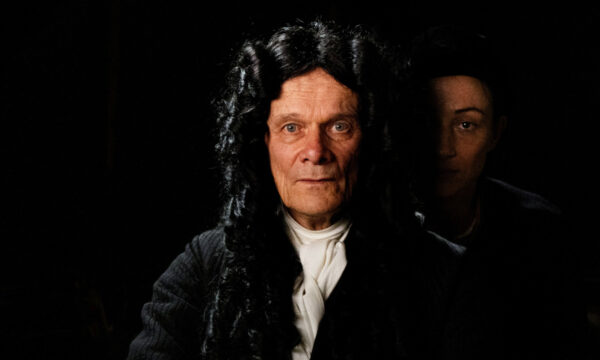
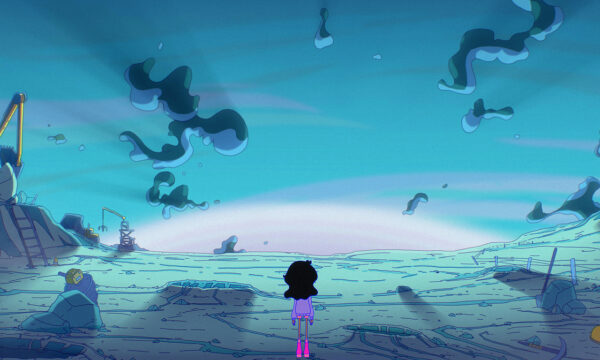
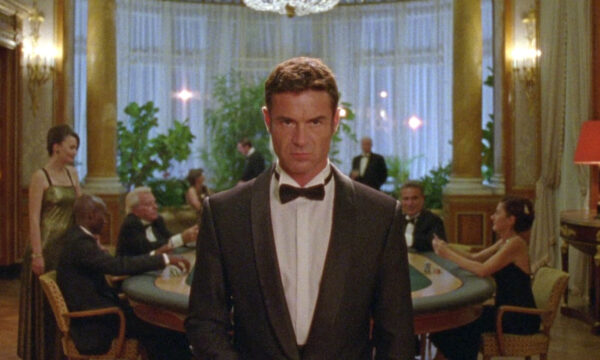
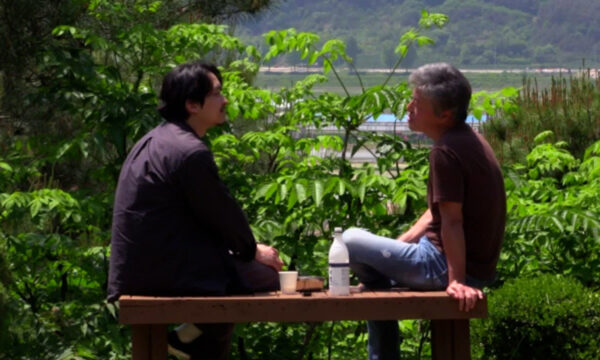
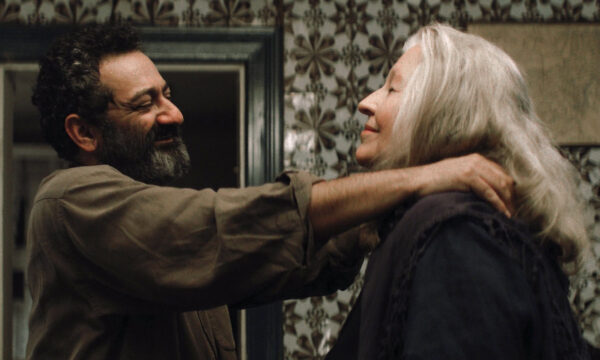
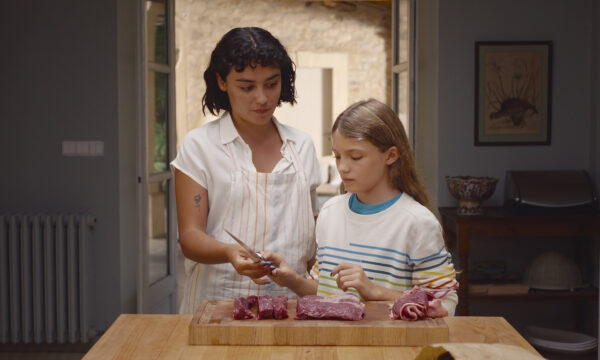
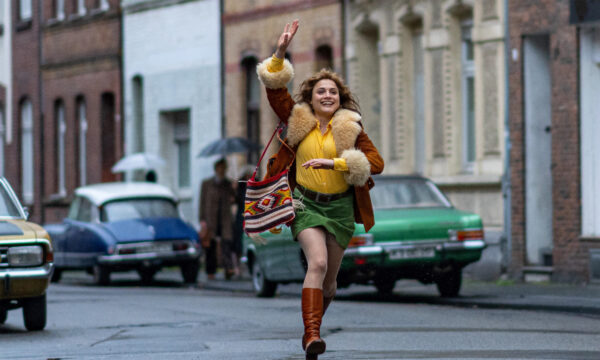
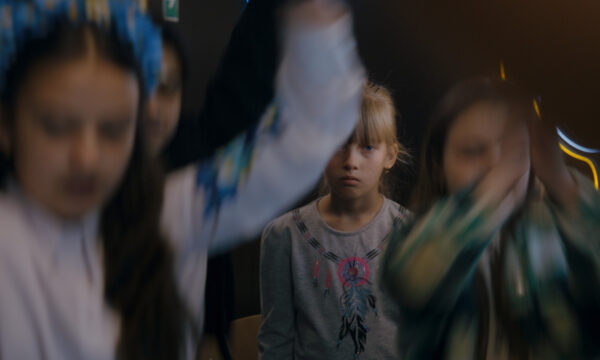






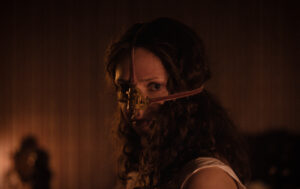
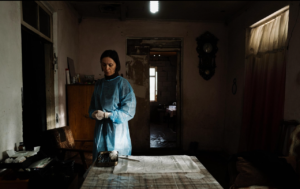







Facebook
Twitter
Instagram
YouTube
RSS